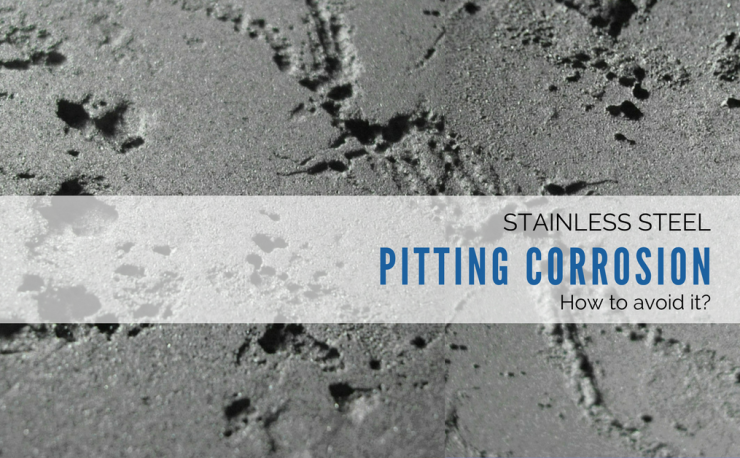
How to Avoid Pitting Corrosion? The pitting is likely the best known corrosion phenomena in relation to stainless steels. But what causes this phenomenon?
Pitting. How to cause it?
Pitting is caused by local laceration of the passive layer. But how it originated? This phenomenon arises from the action of strongly activating elements such as chloride (Cl-) or fluoride (Fl-) ions. But what causes this phenomenon?
- lack of homogeneity of the metal surface (high roughness or presence of superficial scales)
- localized loss of liabilities
- ferrous or non-metallic surface contamination (e.g. inclusion of sulphides)
- mechanical disruption or antioxidant coating chemistry.
For stainless steels (corrosion resistant alloys), the most common cause of pitting is highly localized destruction of liabilities. This is mainly due to the contact with moisture in the presence of halides.
How’s it look?
The phenomenon of pitting is recognizable by pittings that form on the surface of the material. These pittings are characterized by a crater (called “anodic area”) which is surrounded by an halo (called “cathode area”). Simply, it appears superficially with small holes (sometimes invisible to the naked eye) surrounded by a dark halo and a series of underlying cavities that develop in depth.
Types of pittings.
The pitting corrosion is one of the most insidious forms of corrosion. This may cause breakage by drilling. There can be several types of pitting.
How to avoid it?
But how do you avoid this type of corrosion? In these cases it is necessary the choice of alloys with high amounts of chromium, nickel and molybdenum. These items have a passive layer much more stable and durable. To avoid the process of pitting, you are still advised to avoid environments containing high amounts of chlorine ions and halides in general.
Find our webshop.
Click on the link below to access on our web shop. You can choose the most suitable items to your customers needs.
Click here


